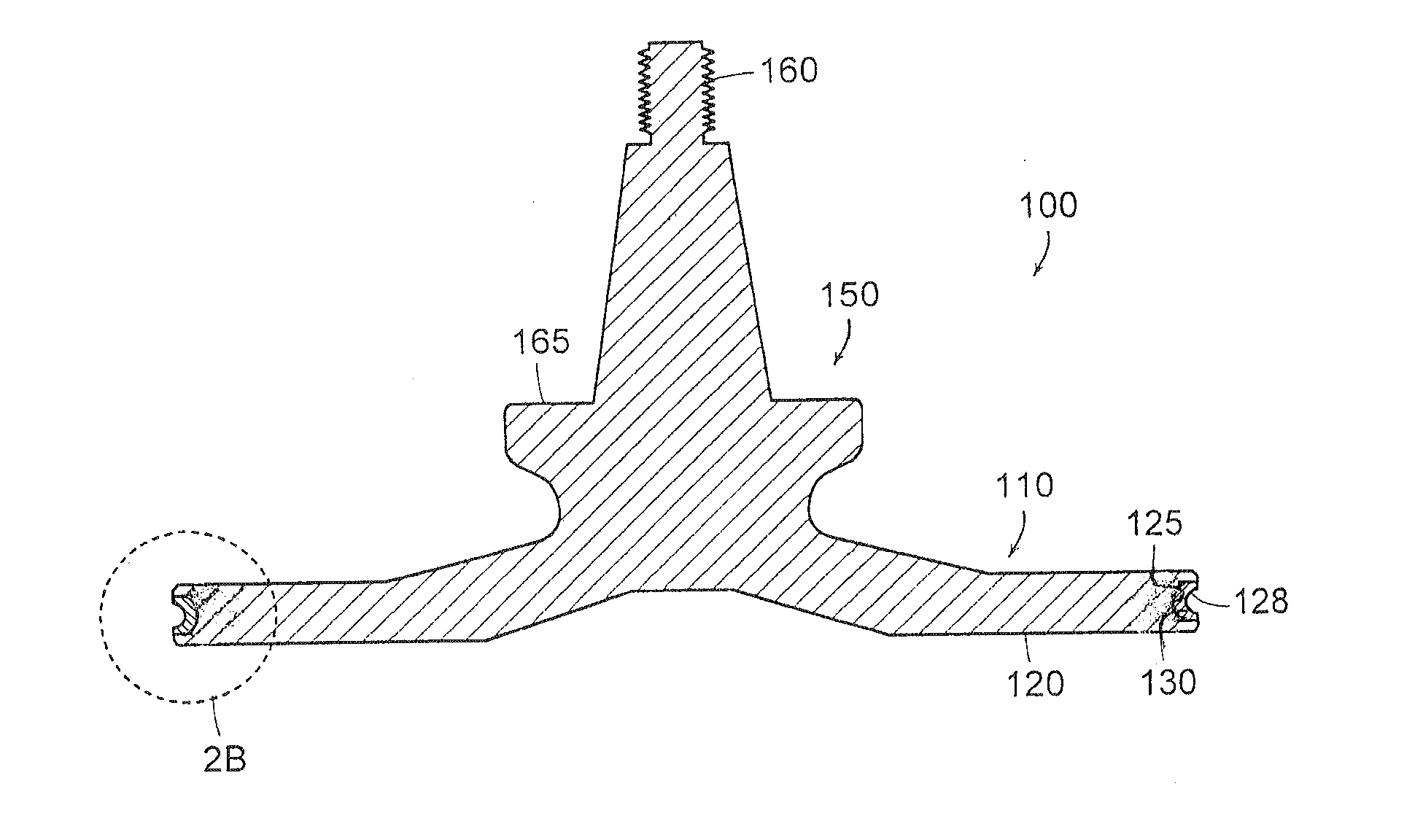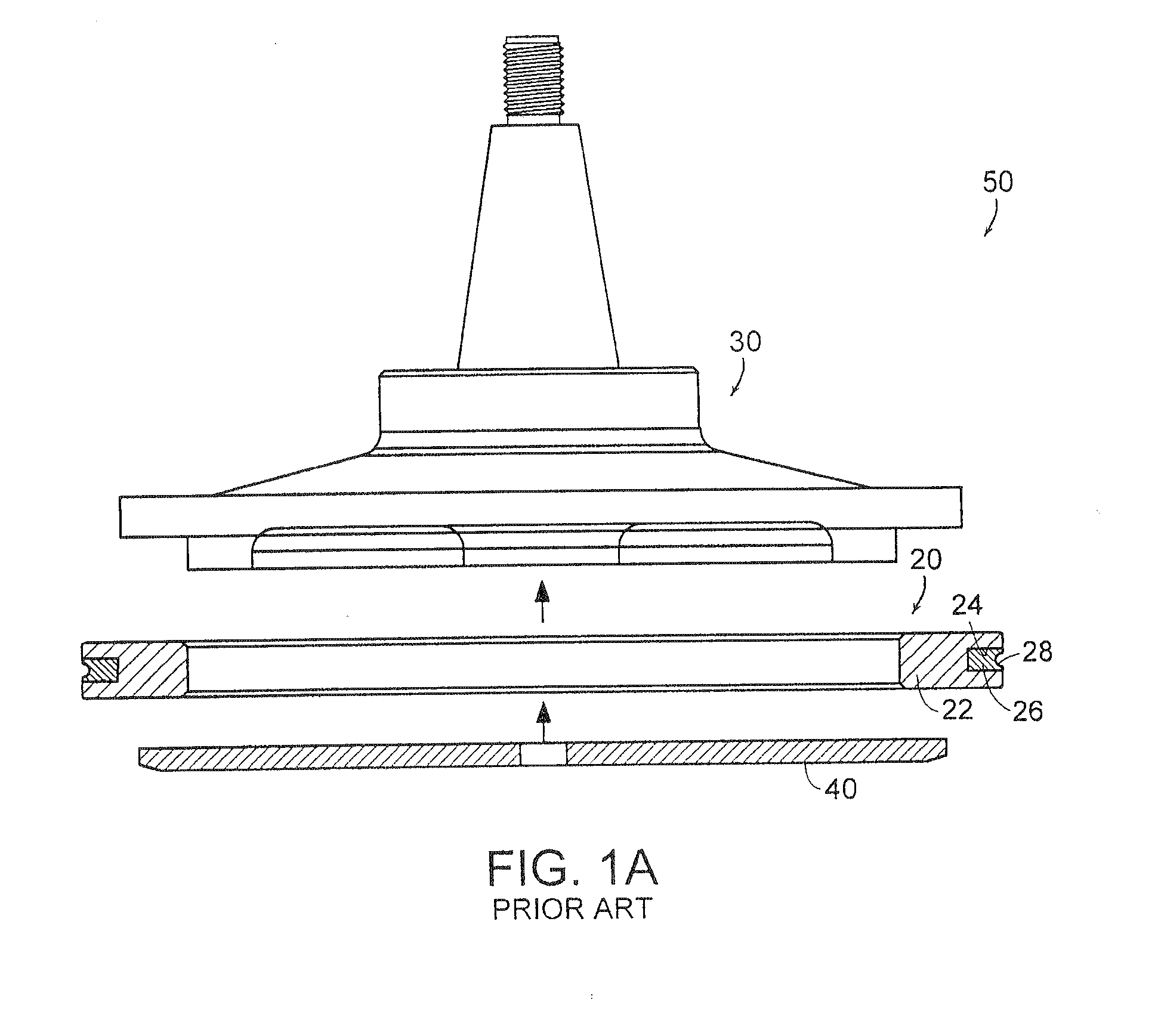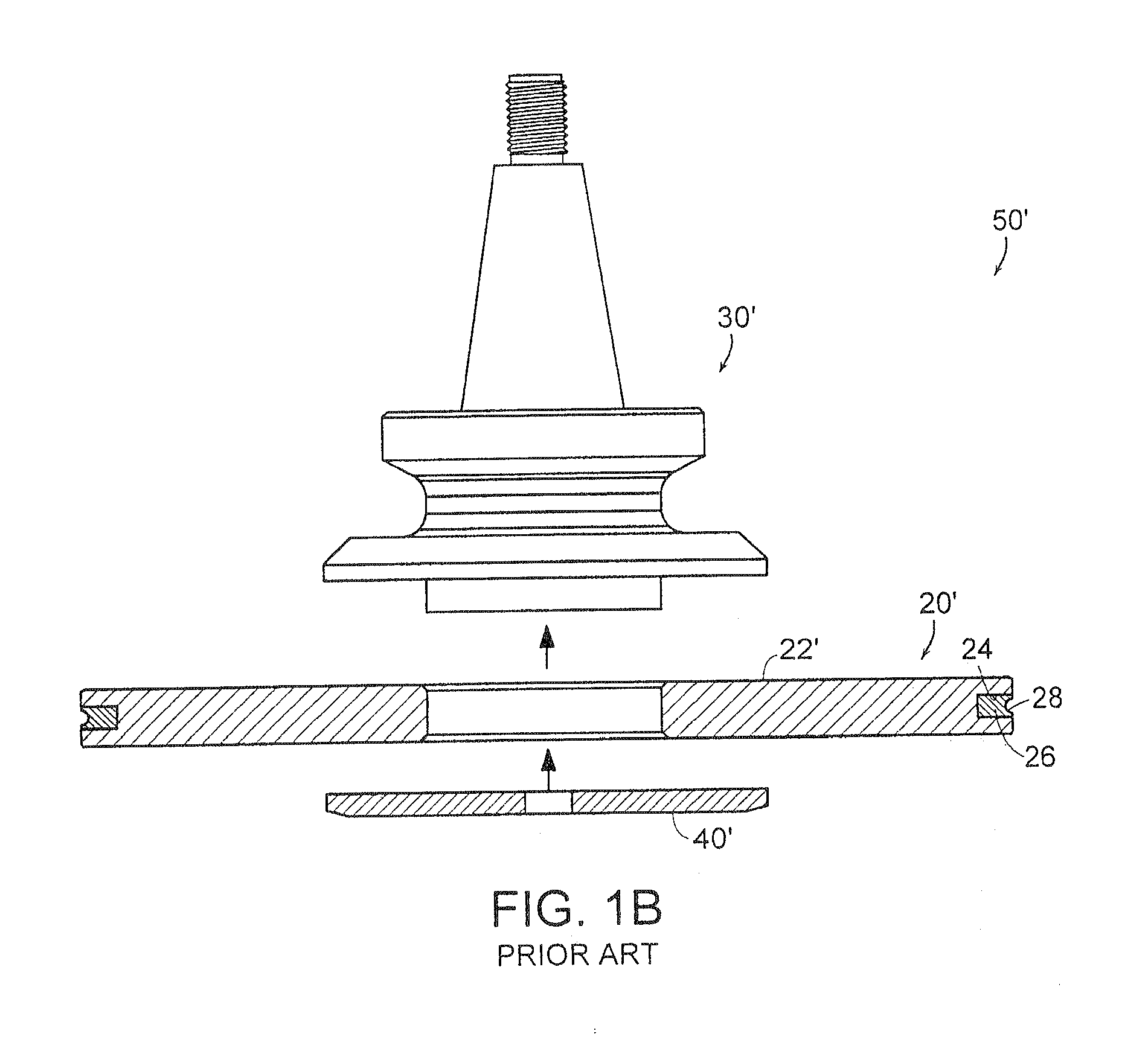Single-use edging wheel for finishing glass
a technology of edging wheel and finishing glass, which is applied in the field of grinding tools, can solve the problems of unresolved problems, additional costs, and inconvenient use of reprofiling edge grinding tools
- Summary
- Abstract
- Description
- Claims
- Application Information
AI Technical Summary
Benefits of technology
Problems solved by technology
Method used
Image
Examples
example 1
[0047]A single-use edging wheel was produced substantially as shown and described with respect to tool 100, using a one piece wheel / arbor portion 110, 150, in which the wheel 110 was fabricated from steel, and included a recess 125 substantially as shown and described with respect to FIG. 2B. The following bronze based paste system was used to provide the multi-layer bonded abrasive 130.[0048]91 weight percent prealloyed bronze (77 / 23 Cu / Sn) −325 mesh;[0049]9 weight percent titanium hydride;[0050]10 volume percent micron diamond (3-5 micron, as a wear retardant);[0051]40-50 volume percent water based binder (Vitta™ Binder) to form a paste with the proper consistency for application to the substrate; and[0052]7-14 volume percent diamond in the 150-220 mesh range to serve as the working abrasive.
In addition, 10 to 20 volume percent cast iron, DELCROME® 90 alloy, tungsten carbide, and / or other similar materials can be optionally added to the paste system to further increase durability / ...
example 2
[0053]A single-use edging wheel was produced substantially as shown and described with respect to tool 100 hereinabove, using a one piece wheel / arbor portion 110, 150, in which the wheel 110 was fabricated from 304 stainless steel, and included a recess 125 substantially as shown and described with respect to FIG. 2B. The following nickel-chrome based paste system was used.[0054]Nicrobraze LM brazing alloy (Wall Colmonoy Corporation, Detroit, Mich.);[0055]40-50 volume percent water based braze binder (Vitta Braz-Binder Gel™ from Vitta Corporation) to form a paste with the proper consistency for application to the substrate; and[0056]7-14 volume percent diamond (150-220 mesh) to serve as the working abrasive.
In addition, 10 to 20 volume percent cast iron, DELCROME® 90 alloy, stainless steel, and / or other similar material can be optionally added to the paste system to further increase durability / hardness, as will be appreciated in light of this disclosure.
PUM
 Login to View More
Login to View More Abstract
Description
Claims
Application Information
 Login to View More
Login to View More - R&D
- Intellectual Property
- Life Sciences
- Materials
- Tech Scout
- Unparalleled Data Quality
- Higher Quality Content
- 60% Fewer Hallucinations
Browse by: Latest US Patents, China's latest patents, Technical Efficacy Thesaurus, Application Domain, Technology Topic, Popular Technical Reports.
© 2025 PatSnap. All rights reserved.Legal|Privacy policy|Modern Slavery Act Transparency Statement|Sitemap|About US| Contact US: help@patsnap.com



